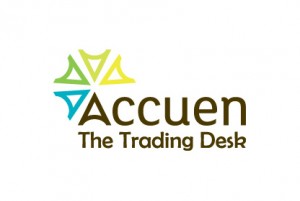Omnicom's Nordic Chief Digital Officer, Frank Andersen, Discuses The Group's Data-Driven Media Buying Strategy In The Region
by Ciaran O'Kane on 15th May 2012 in News


Frank Andersen is Nordic Chief Digital Officer. Here he discusses the group's move into data-driven media buying in the region.
Would you be able to provide a bit more detail on the Accuen/Annalect Group/Omnicom Media Group proposition across the Nordic region?
Annalect Group is Omnicom Media Group‘s analytics, data and technology division, which among other things handles the Accuen Trading Desk. Our trading desk is a technology stack, combined with skilled people, designed to bring more value to both publishers and advertisers. Our positioning is quite clear. We do not buy cheap remnant media inventory in bulk and resell it. For us, the trading desk is about smarter media buying by applying the latest best-of-breed technologies, data and intelligent audience targeting. With Accuen we simply deliver more value to publishers and advertisers at an impression-by-impression level, and for our clients the trading desk solution is completely transparent in terms of technology, site placements and billings.
Why is the subject of automated buying important to the Omnicom Media Group business?
We believe that automated or programmatic buying is important to publishers and advertisers. As a media agency, the optimal solution to our clients’ needs is to deliver the right person, at the right time, with the right message, in the right place, at the right price. Automated buying is a giant leap towards reaching that solution. In a constantly changing environment we need adaptive marketing tools and skills, as clients, planners and buyers are overwhelmed by increasing amounts of data and channels. Our trading desk is the solution to that challenge.
Do you currently have a trading desk live in market, or is still in the planning stage?
The Accuen trading desk is live across the Nordic region and is gradually being scaled with more inventory sources. We apply Accuen across various media inventory sources ranging from all existing global and local ad exchanges to direct integration with local publishers.
It has been said that the lack of RTB demand is actually holding back increased liquidity (chicken and egg situation) of publisher inventory. How important is it for the likes of Omnicom Media Group, Vivaki and Xaxis in the region to stimulate growth in this space?
It is obviously very important. The current local inventory volume makes the buying volatile and ineffective at times. We believe that the right supply does not meet demand today, because many agencies and publishers come from very different positions. Some agencies see this just as cheap inventory and as a consequence bid below $1 (unless retargeting). On the other side, many publishers work with (very) high floor prices, typically around $2-4, so they only get a very small amount of impressions (the retargeting), and they are frustrated with the inability to scale up. So the error is on both sides. Our position is to populate the trading desks with premium inventory, and that we believe will stimulate growth.
Are publishers ready for this new way of executing media buys?
In general yes, in the Nordics maybe less so. Politics and technology barriers often get in the way of opening up to new ways of buying. We think that the development we are seeing mimics that of Germany, where strong (and often united) publishers have locked down the market, but have now begun embracing new ways of selling inventory. Moving the perspective on this takes time, and by focusing on improving the value of every single impression served by publishers, we will also begin to see the full potential of the new media buy.
Are agencies ready?
The road can be a bit bumpy from an agency perspective. From being very proactive about this in late 2011, many agencies have gone on stand-by these months due to lack of local inventory, technical issues and client readiness. We are ready, and programmatic buying has the highest priority.
What initiatives are you working on internally to fuel greater RTB adoption?
It is pretty simple. RTB adoption is being fueled by the results and relative performance we get from the trading desk buys. RTB get exactly the same priority as all other media buys, and as such, RTB is being fueled in the same way as all other buying alternatives. Performance will be the judge of the agency adoption.
Do marketers in the region “get” RTB?
Yes, we believe they get it. Adaptive marketing is the name of the game, and the trading desk is a compelling part of the marketer’s adaptive marketing operation. Travel, telco and finance, especially, have been quick to grasp the concept and the possibilities, while others are showing less interest. RTB can be rather complicated to grasp, but we are very ambitious on behalf of our clients and work every day to make them understand the full concept and the technologies involved.
What predictions would you make about the growth potential for programmatic buying over the next 12 months?
It is will depend on the chicken and the situation on inventory and agency adoption, but we believe we will see around 10-15% of display budgets running here by end 2012. That is as far as we are willing to go in terms of predictions.
Peter Loell, Director, Annalect, Omnicom MediaGroup, will be speaking at the ATS Stockholm event on May 24. Get your ticket today. Full agenda on the event is available here.
Ad ServerAgencyAnalyticsDisplayExchangeNordicsProgrammaticPublisherTradingTrading Desk








Follow ExchangeWire